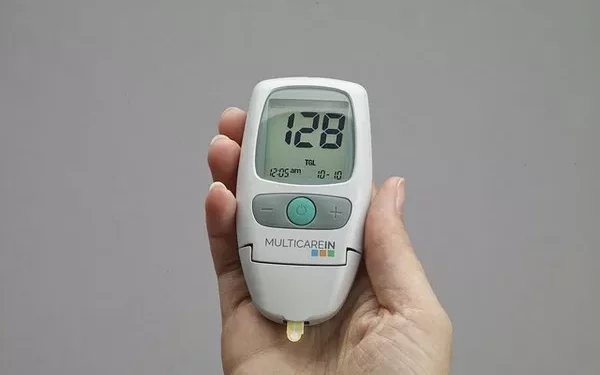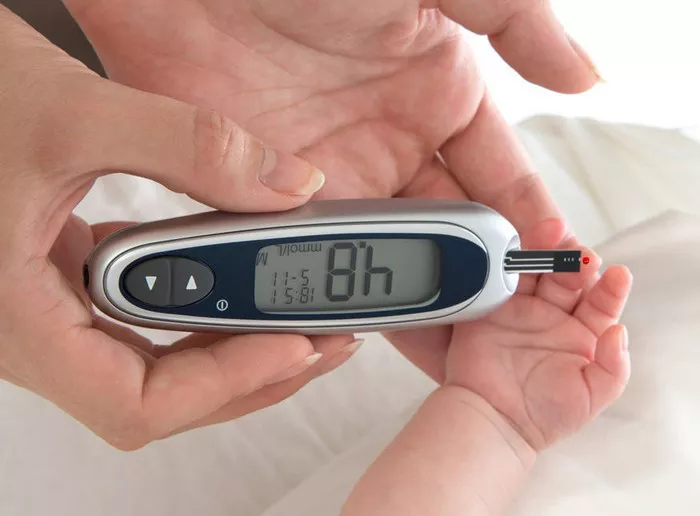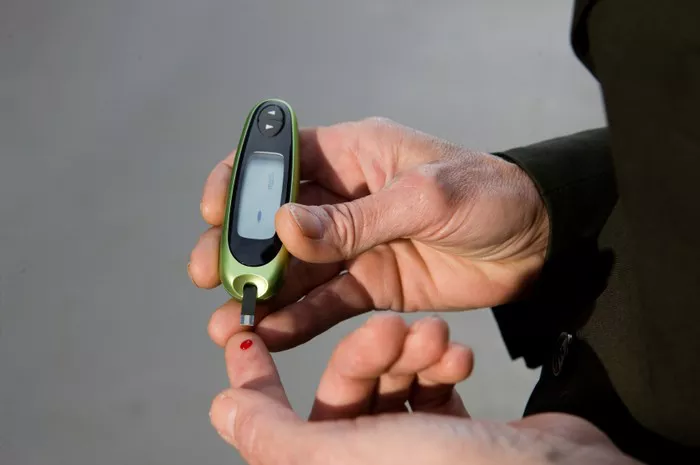Hyperglycemia, or elevated blood glucose levels, is a common challenge for individuals with diabetes. Rapidly addressing hyperglycemia is crucial for preventing short-term complications such as diabetic ketoacidosis (DKA) and hyperosmolar hyperglycemic state (HHS), as well as mitigating long-term risks like cardiovascular disease and neuropathy. This article explores effective strategies to rapidly reduce hyperglycemia, focusing on immediate interventions, lifestyle adjustments, and pharmacological treatments.
Understanding Hyperglycemia
Hyperglycemia occurs when there is an excess of glucose in the bloodstream. This can result from inadequate insulin production, insulin resistance, or a combination of both. Elevated blood glucose levels can lead to various symptoms, including excessive thirst, frequent urination, fatigue, and blurred vision. Prolonged hyperglycemia can contribute to serious complications, making prompt and effective management essential.
Immediate Interventions for Rapid Reduction of Hyperglycemia
When addressing hyperglycemia, the goal is to reduce blood glucose levels quickly and safely. Several immediate interventions can help achieve this:
1. Administration of Insulin
For individuals with type 1 diabetes or those with type 2 diabetes experiencing severe hyperglycemia, insulin administration is often the fastest way to lower blood glucose levels. Insulin therapy helps to facilitate glucose uptake into cells and reduce blood glucose concentrations. The types of insulin used for rapid reduction include:
Rapid-Acting Insulin: Insulin analogs such as lispro, aspart, and glulisine have a quick onset of action, typically within 15 minutes. These insulins are ideal for managing acute hyperglycemia and can significantly lower blood glucose levels within a short period.
Regular Insulin: Regular insulin, also known as short-acting insulin, has a slightly longer onset but is still effective for rapid glucose reduction. It typically begins to work within 30 minutes and has a duration of action of 4-6 hours.
In cases of severe hyperglycemia, insulin may be administered intravenously in a hospital setting for more precise control and faster results. Continuous intravenous insulin infusion allows for real-time adjustments based on frequent blood glucose monitoring.
2. Oral Medications
For individuals with type 2 diabetes, certain oral medications can help reduce hyperglycemia relatively quickly, though they are not as immediate as insulin. Medications that may be used include:
Biguanides: Metformin is a commonly used medication that decreases hepatic glucose production and improves insulin sensitivity. While not as fast-acting as insulin, it can help stabilize blood glucose levels over time.
Sulfonylureas: Drugs such as glipizide and glyburide stimulate insulin secretion from the pancreas. They can help lower blood glucose levels but are usually not as immediate in effect as insulin.
Oral medications are typically part of a long-term management strategy rather than an acute intervention. In cases of severe hyperglycemia, insulin or other rapid interventions may be preferred.
3. Hydration and Electrolyte Management
Hyperglycemia can lead to dehydration as excess glucose is excreted through the urine. Ensuring adequate hydration can help lower blood glucose levels and prevent complications such as diabetic ketoacidosis. Drinking water or an electrolyte solution can help to:
Promote Diuresis: Increased urine production helps to eliminate excess glucose from the bloodstream.
Prevent Dehydration: Proper hydration helps to maintain electrolyte balance and supports overall metabolic function.
In severe cases of hyperglycemia or diabetic ketoacidosis, intravenous fluids may be administered in a healthcare setting to rapidly correct dehydration and electrolyte imbalances.
4. Dietary Adjustments
Immediate dietary changes can help manage hyperglycemia, especially if the elevation is due to recent dietary indiscretions. Key dietary adjustments include:
Low-Carbohydrate Meals: Reducing carbohydrate intake can help prevent further spikes in blood glucose levels. Opt for meals high in fiber and low in refined sugars and carbohydrates.
Small, Frequent Meals: Eating smaller, more frequent meals can help stabilize blood glucose levels and prevent large fluctuations.
While dietary adjustments can aid in managing hyperglycemia, they are typically more effective as part of a comprehensive long-term strategy rather than an acute intervention.
Lifestyle Adjustments for Managing Hyperglycemia
In addition to immediate interventions, certain lifestyle adjustments can help in managing hyperglycemia effectively. These adjustments may contribute to long-term glucose control and reduce the frequency and severity of hyperglycemic episodes.
1. Physical Activity
Regular physical activity plays a significant role in lowering blood glucose levels. Exercise helps to increase glucose uptake by muscle cells and improves insulin sensitivity. Strategies for incorporating physical activity include:
Aerobic Exercise: Activities such as walking, jogging, or cycling can help lower blood glucose levels and improve overall cardiovascular health.
Resistance Training: Strength training exercises, such as weight lifting, can enhance muscle mass and improve glucose utilization.
Exercise should be tailored to individual capabilities and health conditions. For those with severe hyperglycemia, it’s essential to consult with a healthcare provider before starting a new exercise regimen.
2. Stress Management
Stress can impact blood glucose levels by increasing cortisol, a hormone that raises blood sugar. Managing stress through techniques such as:
Mindfulness and Meditation: Practices that promote relaxation and reduce stress can help stabilize blood glucose levels.
Deep Breathing Exercises: Techniques that focus on deep breathing can help mitigate the physiological effects of stress.
Incorporating stress management strategies into daily routines can contribute to better overall glucose control and improve quality of life.
3. Regular Monitoring
Frequent blood glucose monitoring is crucial for managing hyperglycemia effectively. Regular testing allows individuals to:
Identify Patterns: Monitoring blood glucose levels can help identify patterns and triggers of hyperglycemia, enabling more precise adjustments to treatment plans.
Adjust Medications: Real-time data can guide decisions on insulin dosages or adjustments to oral medications.
Continuous glucose monitoring systems (CGMs) provide real-time feedback on blood glucose levels and can be particularly beneficial for individuals with frequent hyperglycemic episodes.
Pharmacological Treatments for Long-Term Management
For individuals with chronic hyperglycemia, long-term management strategies are essential. Pharmacological treatments play a key role in achieving and maintaining blood glucose control.
1. Insulin Therapy
Long-acting insulin and insulin analogs are often used for long-term management of hyperglycemia in type 1 and type 2 diabetes. These insulins provide a steady level of insulin throughout the day and night, helping to regulate blood glucose levels consistently.
Basal Insulin: Long-acting insulins such as glargine and detemir provide a slow and consistent release of insulin, helping to maintain baseline glucose control.
Pre-Mixed Insulin: These formulations combine short-acting and long-acting insulin in a single injection, providing coverage for both meal-related and basal glucose needs.
2. Oral Medications
For type 2 diabetes, several classes of oral medications can help control blood glucose levels over the long term:
DPP-4 Inhibitors: Drugs like sitagliptin and saxagliptin work by enhancing insulin secretion and reducing glucagon levels, leading to lower blood glucose levels.
GLP-1 Receptor Agonists: Medications such as liraglutide and exenatide mimic the effects of glucagon-like peptide-1 (GLP-1), which enhances insulin secretion and slows gastric emptying.
3. Combination Therapy
In some cases, a combination of different medications may be necessary to achieve optimal blood glucose control. Combining medications from different classes can address multiple aspects of glucose metabolism and enhance overall effectiveness.
Preventing Hyperglycemic Episodes
Preventing hyperglycemic episodes is as important as managing them. Strategies for prevention include:
Consistent Monitoring: Regular monitoring of blood glucose levels helps detect early signs of hyperglycemia and allows for timely intervention.
Adherence to Treatment Plans: Following prescribed medication regimens and lifestyle recommendations is crucial for maintaining stable blood glucose levels.
Education and Support: Ongoing education about diabetes management, including recognizing signs of hyperglycemia and understanding how to adjust treatment plans, is vital for effective long-term control.
See also: What Is Postprandial Hyperglycemia?
Conclusion
Rapidly reducing hyperglycemia involves a combination of immediate interventions, lifestyle adjustments, and long-term management strategies. Insulin administration, oral medications, hydration, dietary adjustments, and physical activity all play critical roles in managing elevated blood glucose levels.
While insulin provides the fastest reduction in blood glucose, incorporating lifestyle changes such as regular exercise, stress management, and frequent monitoring can enhance overall glucose control and prevent future episodes of hyperglycemia. Pharmacological treatments, both insulin and oral medications, are essential for long-term management, ensuring consistent blood glucose control and reducing the risk of complications.
Effective management of hyperglycemia requires a comprehensive approach tailored to individual needs and health conditions. By understanding and implementing these strategies, individuals with diabetes can achieve better control over their blood glucose levels and improve their overall quality of life.
Related topics:
How to Treat Non-Diabetic Hyperglycemia

























